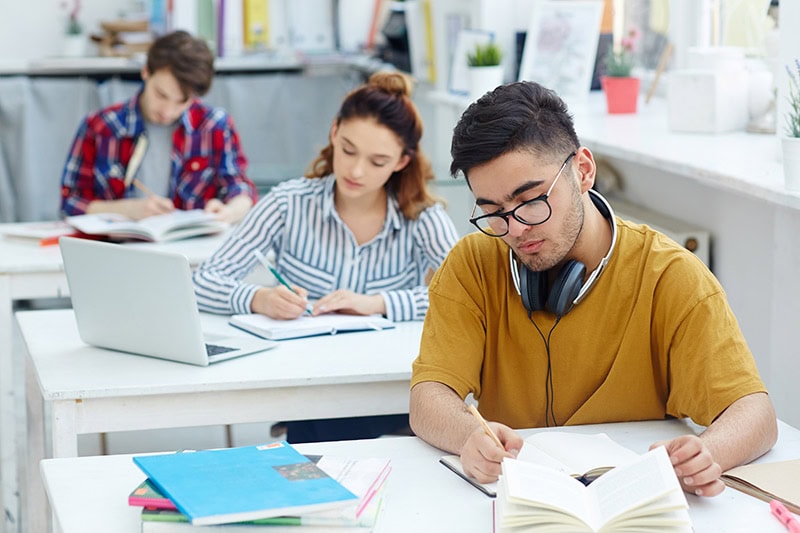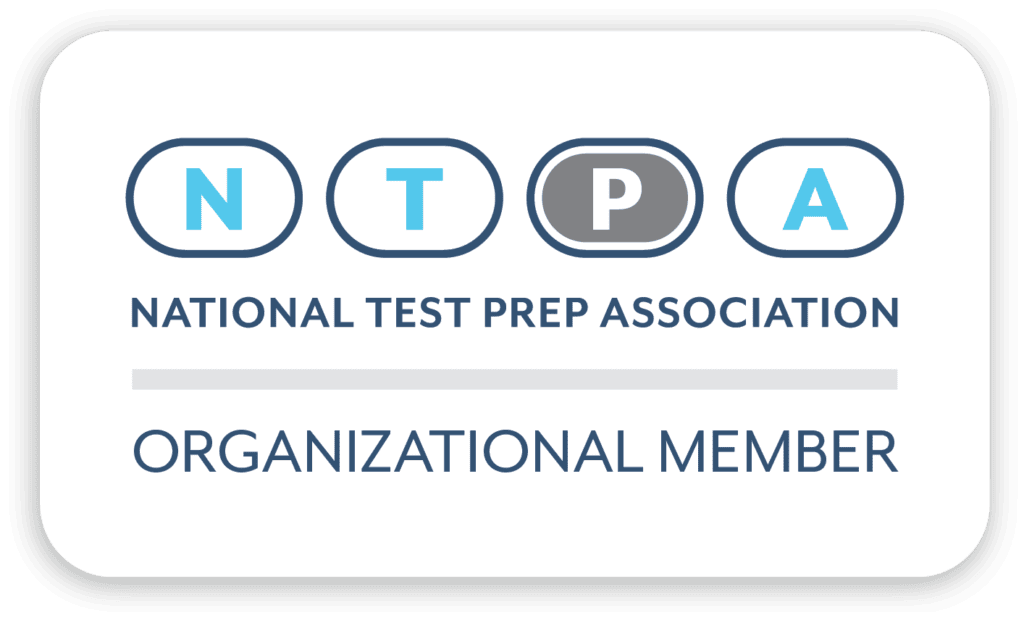Each student learns differently, so the teaching and studying techniques that work best for one person might prove challenging or alienating for another. Taking the time to understand your learning style and adapt strategies that complement it, will help prepare you for success in the classroom and beyond. Once you understand how you learn best, you can work to develop strategic habits and effective study plans that will help you to make the most of your study time
There are many schools of thought on the number and nature of learning styles, and any attempt to classify something as complex and dynamic as learning styles will be, by nature, imprecise. In this article we will outline some of the most commonly identified and well-understood learning styles and provide study techniques that will help you play to your strengths.
Style 1 – Verbal
Sometimes referred to as ‘Reading/Writing Learners’, Verbal-learning students have arguably the most ‘traditional’ style of learning. These students often find it most useful to take thorough notes during classes and study sessions so that they can later return to their notes and, by re-reading them, internalize and memorize the information. If you are a Verbal learner, there are lots of ways to maximize the effectiveness of your study time, and just because your study methods mainly involve pens and paper, that doesn’t mean you can’t find ways to be imaginative in your study.
Verbal learners benefit from writing things down. In some cases it works to do this on a computer, but many students find that writing by hand helps them to better retain information. Making detailed study timetables can be very helpful, dedicating different hours of the day to different subjects and scheduling breaks in between so that you create some space between subjects. Paraphrasing is also a wonderful tool for Verbal learners, as it allows students to take ownership of a description or summary in a way that often makes it easier to recall. It’s wise to keep your definitions as simple and straightforward as possible. Try condensing your notes down to the fewest number of words possible – how would you summarize this concept or definition in a tweet? You might also try to come up with rhymes or mnemonic devices, as these can be helpful on test day, and the mere act of coming up with them is meaningful review. If your learning style does mostly revolve around reading and writing, make sure to take breaks – especially if reading off a computer – to give your eyes and brain a rest.
Style 2 – Visual
Visual learners tend to learn best when their words are matched to graphs, images, and diagrams. While this style of learning might seem most conducive to subjects like Math and Science, with their frequent use of charts and visually distinctive ways of presenting information, there are many ways that a Visual learner can apply their strengths to other subjects.
History in particular is rife with opportunities to create timelines and flowcharts and maps for studying, while spider diagrams that connect concepts and analyses can be immensely helpful in subjects like English, and the act of making these tools is valuable studying in and of itself. When making notes, Visual learners may find it helpful to use highlighters or different color pencils or pens to color code information according to any number of criteria. You may also want to replace certain words or concepts with symbols that are easy to remember and help you to better understand the relationships between ideas. Arrows and connecting lines alone can go a long way.
While many students rely heavily on study videos that are widely available online , watching videos is not always the best strategy for Visual learners, especially if the video is heavily reliant on voiceover. There are many wonderful educational resources that include visuals, from Khan Academy to the many channels available on YouTube, so try a few different ones to see what works best for you. It may not be the first or most popular video on the topic.
Style 3 – Auditory
Auditory learners get the most out of hearing their lessons, and there are many ways to tailor a study plan to suit this kind of learning. Videos may actually prove even more useful to Auditory learners than Visual ones, as you can hear a concept explained to you as many times and in as many ways as you like at a pace that perfectly suits you.
If Auditory learning is particularly well-suited to you, try to engage in group study, where you can practice explaining concepts out loud, seek out opportunities for conversations with teachers and tutors. You can strengthen your understanding of a concept by simply talking about it. Mnemonic devices work well for auditory learners, and some Auditory learners swear by recording lessons or lectures or even their own explanations of topics and then listening to those recordings. You may also be able to find audiobooks for certain readings, which you can listen to at your desk, in the car, or while doing other things like cleaning your room, walking the dog, or exercising. You could also listen to these recordings just before bed and sleep on the information, as studies show that we retain information well when we review it before bed, but make sure this strategy doesn’t interrupt your sleep cycle.
If you don’t find music too distracting when studying, it can also be a powerful memory aid, particularly classical and low-fi beats. Just make sure it’s not getting in the way of your focus – keep the volume relatively low and try to avoid anything lyrically dense that could prove distracting when working with content that requires your close attention.
Style 4 – Physical
Physical learning, often referred to as ‘kinesthetic learning’, works best for students who learn through movement and active physical participation . This doesn’t necessarily mean you have to solve problems by hand – not all subjects allow for that – but physical engagement is crucial to your learning process. You might find it helpful to study while pacing, to opt for projects that allow for creative expression through speech, film, or dance, and to take a leading role in lab work in Science subjects. It may also be helpful for you to have fidget toys available to keep your hands active – from silly putty to fidget spinners, there are many great tools that can help Physical learners improve their concentration and retention of information.
There are times when it is difficult to adapt your study habits to include physical motion. In these situations it is important to structure your studying in a way that allows for intermittent movement. Scheduling breaks and rewards will break up the day into more manageable chunks, and some students find the Pomodoro Method to be stretching, walking around, or even engaging in light exercise. . Keeping active during down time can help focus your mind when it’s time to get back to the books.
Style 5 – Social
Social learning encompasses parts of Verbal, Visual, Auditory, and Physical learning, and for Social learners it is immensely helpful to practice explaining a concept to others in order to teach yourself that concept, and your classmates may also have a new approach to a problem that proves to be very helpful to you too. Social learning can make studying both fun and effective, though it does have to be disciplined in order to provide its full potential.
If you are a Social learner, group projects at school are fantastic, and you should also schedule study sessions with classmates you work well with and who are similarly committed to the coursework. These sessions should themselves have a set structure, so that you have agreed on when you’re working and when you’re relaxing. Both are important, and it is wise to set these expectations early on.
For some students, Social learning is very distracting. Try a group study session before deciding it’s not for you, but don’t force it if it doesn’t work well for you or if it decreases your productivity. You may also want to try studying with a few different groups of people in order to find classmates with whom you work especially well.
Conclusion
Most students do not fit cleanly into just one of these categories of learning styles, but knowing what combination of techniques works best for you is a powerful tool that will help you get your best results and serve you well in high school, college, and beyond. With a combination of your own judgement and self-analysis, the thoughtful guidance of teachers and tutors, and helpful resources including everything from paper planners to sophisticated apps, you can better understand your individual learning style and build habits and use tools that help you to be more effective and efficient in the classroom and beyond.
Discovering your particular learning style can be a challenge in itself, and it may be a process that you will have to initiate yourself. This doesn’t mean, though, that you have to go it alone. You can talk with classmates about how they study and the resources they use, consult with a teacher who you feel understands you well, and also use some of the many great resources available online. It is important to remember that your perspective is very important in exploring how you learn best. After all, you are the only person who can truly know if a method of studying is actually working for you or not.
Experienced private tutors are an invaluable resource for this process. One-on-one tutoring is, by definition, personalized according to the student’s needs, and an effective tutor will work to evaluate each student’s unique needs, and then able to tailor their lessons to meet those needs in ways that a teacher with a full classroom of students may not have the time or resources to do.
For students seeking to understand their learning styles Open Door Education highly recommends Mindprint, a researched-based online learning styles assessment that provides students with specific, actionable steps to study in ways that better suit their learning profile. Contact Open Door Education today to sign up for your Mindprint assessment.






